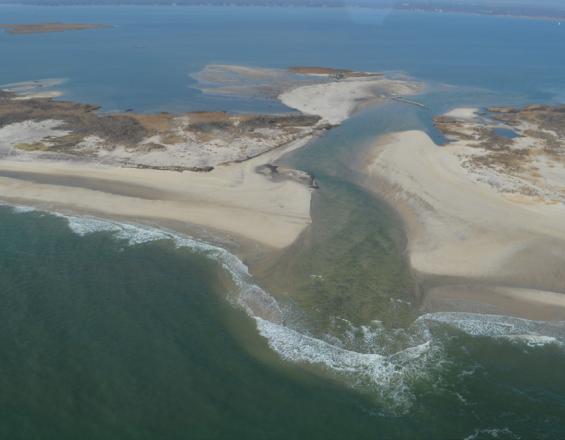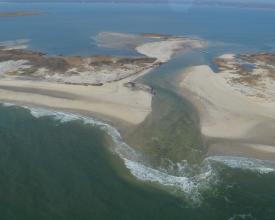
Natural Barrier Island Process and the Wilderness Breach Monitoring at Fire Island National Seashore

Fire Island is a barrier island and provides some storm risk protection to the mainland communities of Long Island. Fire Island National Seashore encompasses most of Fire Island and has a variety of management areas. A breach was formed in the Fire Island Wilderness by Hurricane Sandy in 2012. Since then the wilderness breach has remained opened and studied. This opportunity for natural processes to proceed unimpeded allows biologists to extensively monitor the wilderness breach, providing an opportunity to inform future breach management decisions at Fire Island and elsewhere.
Impacts
Barrier island breaching and overwashing are natural processes that are integral to long-term sustainability of coastal barrier island systems. Breaching can increase the width of an island and contribute to the development of diverse habitats, such as salt marsh and inter-tidal flats. Breaches, such as the Fire Island wilderness breach, allow for the mixing of ocean and estuarine waters, often changing biotic and abiotic conditions. These changes may provide ecological benefits, including localized improvement to water quality. Because of the federal wilderness designation, the wilderness breach was allowed to remain open and studied to determine if it posed a threat to life, property or resources of the park, as described in the Fire Island Wilderness designation. Currently, the National Park Service is in the process of completing an Environmental Impact Statement that will provide guidance to managers on how to best manage the wilderness breach into the future. This opportunity for natural processes to proceed unimpeded allows National Park Service biologists, USGS scientists and academic scientists to extensively monitor the wilderness breach, providing an extraordinary opportunity to inform future breach management decisions at Fire Island, within the mid-Atlantic region and elsewhere.
